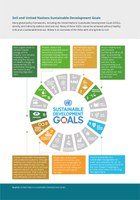
This dashboard provides numbers of Annex V species being taken in the wild or exploited.

This dashboard provides information on the proportion of area of habitat types in good and not good condition. This information relates to the parameter ‘structure and functions of a habitat type’.

This dashboard provides information on the numbers and surface area of Natura 2000 sites and associated legal measures in place per Member State. For official count of number of sites and their areas and EU area statistics please refer to the Natura 2000 barometer.

This dashboard provides information on the share of habitats and species that occurs inside the Natura 2000 network as well as on their trends inside the Natura 2000 network

The figure presents the total global stock of electric vehicles in key regions, including both battery electric vehicles (BEVs) and plug-in hybrid electric vehicles (PHEVs).

The figure presents European spending on research, development and demonstration for energy technologies, fossil fuels, hydrogen, nuclear, renowables and others.

This dashboard provides information on conservation status and trends of habitats and species at the level of Member States.

The calculations of GHG emission trends, projections and targets include emissions from international aviation and exclude emissions and removals from the LULUCF sector. The 'with existing measures' scenario reflects existing policies and measures, whereas the 'with additional measures' scenario considers the additional effects of planned measures reported by Member States.


The raster files are the time series of the start of the vegetation growing season (day of the year) and the derived linear trends (in day / year).
The start of the growing season time-series is based on the time series of the Plant Phenology Index (PPI) derived from the MODIS BRDF-Adjusted Reflectance product (MODIS MCD43 NBAR). The PPI index is optimized for efficient monitoring of vegetation phenology and is derived from the source MODIS data using radiative transfer solutions applied to the reflectance in visible-red and near infrared spectral domains. The start of season indicator is based on calculating the start of the vegetation growing season from the annual PPI temporal curve using the TIMESAT software for each year between and including 2000 and 2016.

Many global policy frameworks, including the United Nations Sustainable Development Goals (SDGs),directly and indirectly address land and soil. Many of these SGDs cannot be achieved without healthysoils and a sustainable land use. Below is an overview of the SDGs with strong links to soil.

Results of classification of Eutrophication Status using the HEAT+ tool. Eutrophication status is evaluated in five classes, where NPAhigh and NPAgood are recognised as ‘non-problem areas’ and PAmoderate, PApoor and PAbad are recognised as ‘problem areas’.